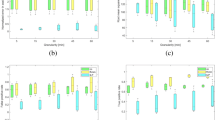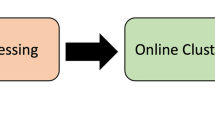Abstract
Non-intrusive load monitoring allows breaking down the aggregated household consumption into a detailed consumption per appliance, without installing extra hardware, apart of a smart meter. Breakdown information is very useful for both users and electric companies, to provide an accurate characterization of energy consumption, avoid peaks, and elaborate special tariffs to reduce the cost of the electricity bill. This article presents an approach for energy consumption disaggregation in residential households, based on detecting similar patterns of recorded consumption from labeled datasets. The proposed algorithm is evaluated using four different instances of the problem, which use synthetically generated data based on real energy consumption. Each generated dataset normalize the consumption values of the appliances to create complex scenarios. The nilmtk framework is used to process the results and to perform a comparison with two built-in algorithms provided by the framework, based on combinatorial optimization and factorial hidden Markov model. The proposed algorithm was able to achieve accurate results, despite the presence of ambiguity between the consumption of different appliances or the difference of consumption between training appliances and test appliances.
Access this chapter
Tax calculation will be finalised at checkout
Purchases are for personal use only
Similar content being viewed by others
References
Batra, N., et al.: NILMTK: an open source toolkit for non-intrusive load monitoring. In: 5th International Conference on Future Energy Systems, pp. 265–276 (2014)
Bonfigli, R., Squartini, S., Fagiani, M., Piazza, F.: Unsupervised algorithms for non-intrusive load monitoring: an up-to-date overview. In: 15th International Conference on Environment and Electrical Engineering (2015)
Colacurcio, G., Nesmachnow, S., Toutouh, J., Luna, F., Rossit, D.: Multiobjective household energy planning using evolutionary algorithms. In: Iberoamerican Congress on Smart Cities (2019)
Ghahramani, Z., Jordan, M.: Factorial hidden Markov models. In: Advances in Neural Information Processing Systems, pp. 472–478 (1996)
Hart, G.: Nonintrusive appliance load monitoring. Proc. IEEE 80(12), 1870–1891 (1992)
International Energy Agency: World Energy Outlook 2015. White paper (2015)
Kelly, J., Knottenbelt, W.: Neural NILM: deep neural networks applied to energy disaggregation. In: 2nd ACM International Conference on Embedded Systems for Energy-Efficient Built Environments, pp. 55–64 (2015)
Kelly, J., Knottenbelt, W.: The UK-DALE dataset, domestic appliance-level electricity demand and whole-house demand from five UK homes. Sci. Data 2, 150007 (2015)
Kim, H., Marwah, M., Arlitt, M., Lyon, G., Han, J.: Unsupervised disaggregation of low frequency power measurements. In: SIAM International Conference on Data Mining, pp. 747–758. SIAM (2011)
Kolter, J., Johnson, M.: REDD: a public data set for energy disaggregation research. In: Workshop on Data Mining Applications in Sustainability, pp. 59–62 (2011)
Larcher, D., Tarascon, J.: Towards greener and more sustainable batteries for electrical energy storage. Nat. Chem. 7(1), 19–29 (2015)
Neenan, B., Robinson, J., Boisvert, R.: Residential electricity use feedback: a research synthesis and economic framework. Electric Power Research Institute (2009)
Nesmachnow, S., Iturriaga, S.: Cluster-UY: high performance scientific computing in Uruguay. In: International Supercomputing Conference in Mexico (2019)
Orsi, E., Nesmachnow, S.: Smart home energy planning using IoT and the cloud. In: IEEE URUCON (2017)
Author information
Authors and Affiliations
Corresponding author
Editor information
Editors and Affiliations
Rights and permissions
Copyright information
© 2020 Springer Nature Switzerland AG
About this paper
Cite this paper
Chavat, J., Graneri, J., Nesmachnow, S. (2020). Household Energy Disaggregation Based on Pattern Consumption Similarities. In: Nesmachnow, S., Hernández Callejo, L. (eds) Smart Cities. ICSC-CITIES 2019. Communications in Computer and Information Science, vol 1152. Springer, Cham. https://doi.org/10.1007/978-3-030-38889-8_5
Download citation
DOI: https://doi.org/10.1007/978-3-030-38889-8_5
Published:
Publisher Name: Springer, Cham
Print ISBN: 978-3-030-38888-1
Online ISBN: 978-3-030-38889-8
eBook Packages: Computer ScienceComputer Science (R0)




